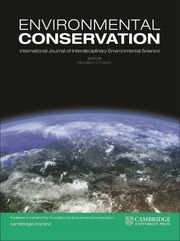No CrossRef data available.
Article contents
Invasive plants can modify the soil environment through litter decomposition
Published online by Cambridge University Press: 08 August 2025
Summary
The successful colonization of invasive plants (IPs) may be facilitated by their nutrient release during decomposition, which alters soil physicochemical properties, enzyme activities, microbial metabolic processes and the diversity of soil microorganisms. This study aimed to examine the effects of co-decomposition of four Asteraceae IPs (Conyza canadensis, Conyza sumatrensis, Erigeron annuus and Solidago canadensis) along a gradient of invasion and a native plant (Pterocypsela laciniata) on decomposition rate, soil physicochemical properties, soil enzyme activities and the diversity of soil bacterial communities (SBCs). Leaves of C. canadensis with heavy invasion and S. canadensis with light and heavy invasion decomposed more slowly than P. laciniata. Leaves of C. canadensis with full invasion decomposed more rapidly than P. laciniata. Pterocypsela laciniata and C. sumatrensis had synergistic effects on each other’s decomposition, whereas P. laciniata and S. canadensis displayed an antagonistic effect. Decomposition of the four IPs increased soil microbial carbon content but reduced soil fluorescein diacetate (FDA) hydrolase activity compared to P. laciniata. Thus, invasion degree and species identity of IPs modulate the effects of the four IPs on the decomposition rate, mixed-effect intensity of co-decomposition, soil microbial carbon content, soil FDA hydrolase activity and SBC structure.
Keywords
Information
- Type
- Report
- Information
- Copyright
- © The Author(s), 2025. Published by Cambridge University Press on behalf of Foundation for Environmental Conservation


